extreme commuting
description: the practice of travelling very long distances, often several hours, to get to and from work.
11 results
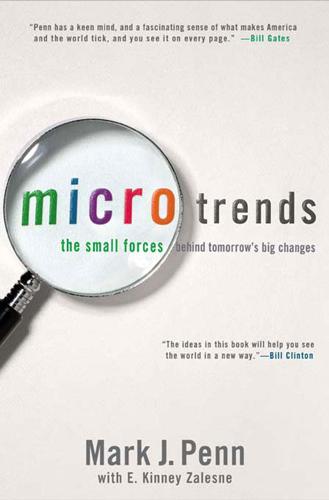
Microtrends: The Small Forces Behind Tomorrow's Big Changes
by
Mark Penn
and
E. Kinney Zalesne
Published 5 Sep 2007
Robert Putnam’s 2000 book Bowling Alone notably found that for every extra ten minutes you commute, you have 10 percent less time for family and community (unless, I guess, you take your kids with you to day care at your workplace). But since many Extreme Commuters signed on to the bargain in pursuit of small-town life, that seems particularly unfortunate, or particularly self-sacrificing. Many Extreme Commuters do this for their families—to give them a better life with better schools. Others wait for the weekends to enjoy the reason they drive all this way during the week. The Extreme Commuter group also has important commercial implications. According to a Newsweek report in 2006, fast food restaurants are coming out with whole meals that fit in cup holders, and some cars are now outfitted with more cup holders than seats.
…
(So far, no one has developed a sanitary, socially acceptable, and portable car toilet.) Finally, Extreme Commuters are a group with serious time on their hands. Some audio companies claim you need just sixteen hours of their language tapes to go from zero Spanish to a full foundation. At that rate, Extreme Commuters listening in their cars can habla español in a week without giving up any other activities. And after a couple months, they could be U.N. translators, if their current jobs don’t work out. Or books on tape. Extreme Commuters are the transportation equivalent of speed readers. They could get through War and Peace in twelve days, or The Da Vinci Code in five.
…
The traffic accident data come from National Highway Traffic Safety Administration, Table 63, “Driver Involvement Rates per 100,000 Licensed Drivers, by Age, Sex, and Crash Severity,” accessed February 2007, at http://www-nrd.nhtsa.dot.gov/pdf/nrd-30/NCSA/TSFAnn/2004HTML/TSF2004.htm#chap2. C. Eugene Steuerle, “Working to Fix Our Fiscal Woes,” Washington Post, April 14, 2006. Thanks also to Dr. Steuerle for personally walking us through some of this analysis by telephone. Extreme Commuters Some key Extreme Commuter articles, from which some of the cited data are drawn, include Keith Naughton, “The Long and Grinding Road,” Newsweek, May 1, 2006; “Extreme Commuting,” BusinessWeek Online, February 21, 2005; and Debbie Howlett and Paul Overberg, “Think Your Commute Is Tough?,” USA Today, November 29, 2004. As of March 2007, the American labor force numbers 146.3 million people.
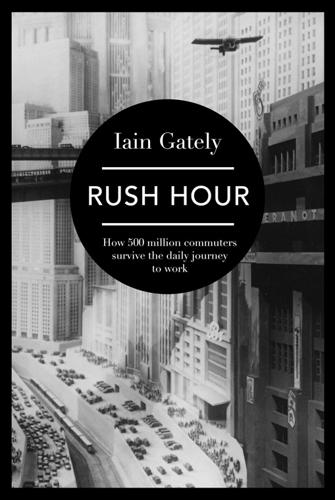
Rush Hour: How 500 Million Commuters Survive the Daily Journey to Work
by
Iain Gately
Published 6 Nov 2014
More meat is the reward for more travel. The hunter’s counterpart in the world of commuting is the so-called ‘extreme commuter’, who travels either great distances or for many hours to get to work each day. In America, where average trips are short, the Census Bureau defines ‘extreme commuting’ as more than ninety minutes each way and reckoned that 2.5 per cent of Americans fell into that category in 2012. The media has crowned various champions of the genre – including Dave Givens, who won Midas Muffler’s*2 2006 extreme commuting title by spending an average of seven hours travelling to and from his home in Mariposa, California, to his work in San Jose in Silicon Valley, a round trip of 372 miles.
…
Givens’s efforts wouldn’t necessarily impress British com-muters, a number of whom travel by train between London and Scotland, and spend over eight hours on the rails each working day. Even my trips on the 07.01 from Botley to Waterloo would have placed me in the category of extreme commuter, alongside every other traveller already on the train, and the tens of thousands of Britons who commute to London from the Midlands, Cambridgeshire, Oxfordshire, Kent and further afield. In a 2014 feature on extreme commuting, the BBC identified a number of Britons who travelled even further than Givens, including Stuart Williams, an IT project manager, who covers 218 miles each way between his home in Ramsbottom, Lancashire, and his office in London.
…
Index a Achen Motor Company 315 Acton 43, 46 Acts of Parliament 17 Acworth, Sir William Mitchell 73 aeroplanes 307 America cars 90–101 commuting 224–5 railways 66–80 American Automobile Association (AAA) 198, 209–10 American Bicycle Co. 91 American Motors 120 American School Bus Council (ASBC) 236 Andrade, Claudio 279, 280 Apple 295–6 Australia 232 autobahn 103, 109, 151, 166 b Bagehot, Walter 59 Balfour, A.J. 65 Barter, David Obsessive Compulsive Cycling Disorder 168 Bazalgette, Joseph 60 Beeching, Dr Richard cuts 137, 146, 158, 313, 328 Beerbohm, Max 58 Beijing 160, 161 Metro 160, 162 Benz, Karl 90 Bern, Switzerland 86, 87 Besant, Sir Walter 57 Best Friend of Charleston crash 69 Betjeman, John 109, 135, 272–3 bicycle Boris bikes 167 Brompton 167 commuting in Britain 101, 138–9, 166–8, 216–17 commuting in Europe 166, 222 Flying Pigeon 161–2 penny farthing 101 Raleigh 139 Rover 101–2 Birmingham HS2 329 number 8 bus 141 Birt, William 61 Bishop’s Waltham 313, 327 Blake, William Marriage of Heaven and Hell 104 Booth, Henry 27 Boris bikes 167 Boston 69, 97 Boston and Worcester Line 72 Botley station, Hampshire 1, 2, 3–5, 7, 313, 334 Bowser, Sylvanus Freelove 95 Brazil 279 British Telecom 291–3 Bromley 23, 46 Brompton bike 167 Brunel, Isambard Kingdom 331 Buchanan, Professor Sir Colin Traffic in Towns 145–6 buses 48, 140–41, 235–6, 275–6 c California High Speed Rail (CHSR) 330, 331 Callan Automobile Law 95 carriages (railway) 29–30, 54, 55 in America 71–3 in France 83–4 WCs 33, 72, 226–7 women-only 188–9 ‘workmen’s trains’ 33–4, 60, 61, 83 cars 89–92, 195 commuting in America 101, 113, 116–17 in Britain 107, 142–4, 249–52 in communist countries 151–2 in Italy 149–50 congestion 192–5 congestion charge 312 driverless 316–17, 320–27 ownership 97–8, 100, 103, 125 radio 119, 255–8 SUVs 204–8 Central Railroad of Long Island 76 C5 (electric tricycle) 309–11 Chaplin, William James 15 Cheap Trains Act 61 Chesterton, G.K. 57, 105, 109 Chicago Automobile Club 96–7, 256 Great Fire of 1871 79 Oak Park suburb 79–80 Park Forest suburb 113–15 China 160–62, 314–15 Chrysler 119, 160 Churchill, Winston 308–9 City and South London Railway 54–5, 62 Clean Air Act 286–7 Cobbett, William 334 Collins, Wilkie Basil 52 commuting (car) see cars commuting (cycling) see cycling commuting (rail) comic representation of 137 commuter etiquette 72–3, 82, 249 extreme commuting 233–4 in America 66–80 in France 81–7 in Germany 80, 86–7 in Japan 177–84 in the 1950s 136 in Victorian times 33–9, 42 food in England 36–7, 247 in France 84–5 origin of the term 67 overcrowding 171–83 coronations 140 County Durham 14 Coventry 102 Crawshay, William 35 Croton Falls 66 Croydon 56 Cultural Revolution (China) 161 Cunarders 140 cycling commuting in Britain 101, 138–9, 166–8, 216–17 commuting in Europe 166, 222 Cyclists’ Touring Club 102–3 d Dagenham 107 Dahl, Roald 129, 135–6 Daimler, Gottlieb 90 Dalai Lama 210 Darwin, Charles 13, 32 Daudet, Alphonse 83–4 Daumier, Honoré The Third-Class Carriage 83 The New Paris 86 Landscapists at Work 86 Defense Advance Research Projects Agency (DARPA) 317, 318 Delhi 211–13 Deng Xiaoping 161, 162 Denmark 222, 288 Detroit 110, 121, 123–4 ‘Detroit by the Volga’ 153 Dickens, Charles 12, 25, 50 food 36–7, 84–5, 247 Mugby Junction 84–5 Great Expectations 12 Our Mutual Friend 50 train travel in America 70, 71, 74 Diggins, John 3 Docklands Light Railway (DLR) 279 Downing, Andrew Jackson 66 driverless cars 316–17, 320–27 driving schools 215–16 driving tests New York State 94–5 UK 216 Duluth, Minnesota 79–80 e Ealing, London 38, 40, 42, 46, 56 Eden, Emily 58 Edinburgh 13, 14, 16, 329 Edmondson, Brad 314 Einstein, Albert 87 Eliot, William G.
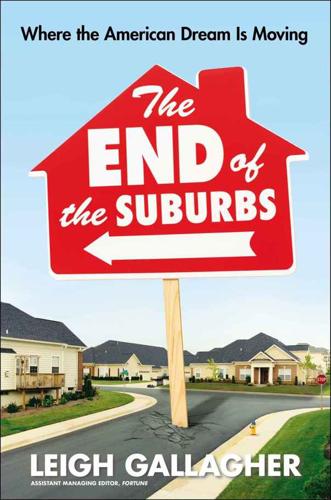
The End of the Suburbs: Where the American Dream Is Moving
by
Leigh Gallagher
Published 26 Jun 2013
The Poconos soon became bedroom communities of Philadelphia and New York, and Poughkeepsie became a suburb of Manhattan; similar development spread out into Loudoun County outside of Washington, DC, and Gwinnett County outside Atlanta. The traditional American Dream said nothing about ninety-minute one-way commutes, but that’s what people were willing to do to get the biggest, best home they could buy. By 2009, three million Americans were making “extreme commutes” of three hours or more round-trip every weekday. Sometime during this era, Bob Toll, who kept an apartment on New York City’s Upper East Side, learned that one of his doormen had moved his family from Queens to the Poconos. He asked him why he did it, when it meant he had to drive an hour and a half—on a good day—to work.
…
(When we talk about commuting in the United States, we are talking almost exclusively about commuting by car; close to 90 percent of U.S. commuters drive themselves to work, while less than 5 percent take public transit.) And the average doesn’t tell the real story. Some 3.5 million Americans now make grueling “extreme commutes,” defined as daily round-trip travel of three hours or more. A few years ago local television news stations started moving their first morning news broadcast from 5:00 a.m. to 4:30 a.m. or even 4:00 a.m. in some markets to capture the growing percentage of viewers who were leaving for work earlier in the day.
…
See History of suburbia historical view, 28–29 home-building boom in, 6, 16 home value increase in, 15, 188 as millennials’ residence choice, 19–20, 157–59 population growth in, 14 renewal and growth (2011), 167–69 shrinkage, alternatives to, 185 smaller/Top Tier Towns, 204 sports stadiums in, 176–77 urbanism, books in favor of, 166–67 wealth, resurgence in, 17–18, 163–177, 187–88 young families’ preference for, 111–12, 151–52, 169–172, 204–5 City (store), 18, 172 City replicas, 127–28 Civil Rights Act (1964), 43 Clayton Homes, 72 Clinton, Bill, 65–66 Colony Capital, 187 Community Growth, Crisis and Challenge (film), 39 Commuting, 94–99 average time spent, 94 commuting paradox, 98 costs of, 5–6, 21, 99–101 extreme commutes, 94–97 longer distances, and housing boom, 68–69, 71, 74–76, 104 necessity and suburbs, 5, 13, 46 physical/mental problems related to, 97–99 Compound concepts, 157 Concept homes, configuration of, 6–7 Condominiums, developments by suburban developers, 163–66 “Confessions of a Recovering Engineer” (Marohn), 57, 63 Congress for New Urbanism, 52, 113–15, 140 Conservatives, suburbs, support by, 62–63 Cooper, Gary, 194–95 Coors Field, 176 Corporations relocation to cities, 173–76 relocation to suburbs, 44 Cortright, Joe, 15, 132 Crime in cities, past view, 44, 167, 168, 179 reduction in cities (2011), 169, 188 in suburbs, 17, 179, 206 Critics of suburbia adolescents, negative factors for, 90, 98, 179 anti-sprawl movement.
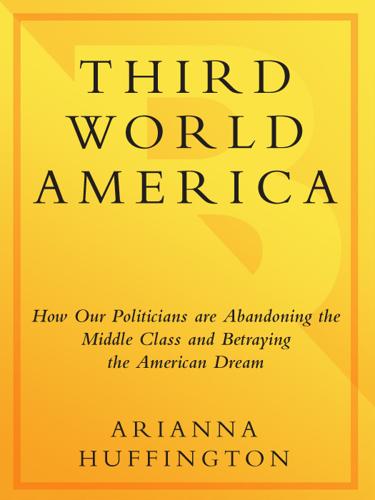
Third World America: How Our Politicians Are Abandoning the Middle Class and Betraying the American Dream
by
Arianna Huffington
Published 7 Sep 2010
Over the past decade, high housing prices have forced many middle-class families to move farther and farther away from the overpriced cities they work in. Doing so has meant ever-longer commutes. By the year 2000, each day, 3.5 million Americans headed out on “extreme commutes,” defined by the U.S. Census Bureau as travel times to and from work of three hours or more each day.50 That is twice the number of extreme commuters there were in 1990. One in eight workers—17.5 million Americans—are now out their front doors every morning and on their way to work by 6 A.M. For more and more of the middle class, life now consists of sleep, an arduous commute, work, another arduous commute, then back to sleep.51 These stressed-out Americans turbo-charge their long journeys to work with PowerBars, vats of Dunkin’ Donuts coffee … and loneliness.
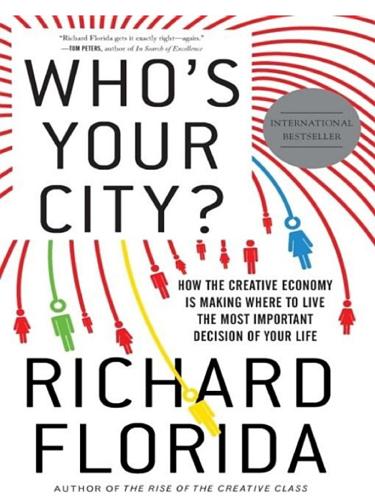
Who's Your City?: How the Creative Economy Is Making Where to Live the Most Important Decision of Your Life
by
Richard Florida
Published 28 Jun 2009
Generally speaking, commuting is a source of unhappiness. But even researchers who look at commuting often miss a key connection: in spite of its negative effects, people do it anyway. According to a 2007 report, about one in six American workers commutes more than forty-five minutes to and from work, and extreme commuters—those who travel at least ninety minutes each way—are the fastest growing category.4 Why would people do this to themselves? The obvious answer is that they aren’t able or willing to move their home closer to work, and at the same time they aren’t able or willing to work where they live. Either way, the choice or the need to commute is grounded in place.
…
., Oxford Handbook of Economic Geography, Oxford University Press, 2000; and Porter, “Location, Competition, and Economic Development: Local Clusters in a Global Economy,” Economic Development Quarterly 14, 1, February 2000, pp. 15-34. 12 Joseph Cortright and Heike Mayer, Signs of Life: The Growth of Biotechnology Centers in the US, Brookings Institution, Center for Metropolitan Policy, 2001. 13 Pui-Wing Tam, “New Hot Spot for High Tech Firms Is the Old One,” Wall Street Journal, October 5, 2006. 14 Ann Markusen and Greg Schrock, “The Distinctive City: Divergent Patterns in Growth, Hierarchy, and Specialization,” Urban Studies 43, 8, July 2006, pp. 1301-1323. 15 Maryann Feldman and Roger Martin, “Jurisdictional Advantage,” National Bureau of Economic Research, October 2004. 16 Dan Fitzpatrick, “Extreme Commuters at PNC Raise Eyebrows,” Pittsburgh Post-Gazette, August 7, 2005. 17 Robert D. Putnam, Bowling Alone: The Collapse and Revival of American Community, Simon & Schuster, 2000. 18 Andrew Hargadon, “Bridging Old Worlds and Building New Ones: Toward a Micro-sociology of Creativity,” in Leigh Thompson, ed., Creativity and Innovation in Groups and Teams, Erlbaum, 2007. 19 AnnaLee Saxenian, Regional Advantage, Harvard University Press, 1994. 20 Mark Granovetter, “The Strength of Weak Ties,” American Journal of Sociology 78, 6, May 1973, pp. 1360-1380. 21 Richard Caves, Creative Industries: Contracts Between Art and Commerce, Harvard University Press, 2002.
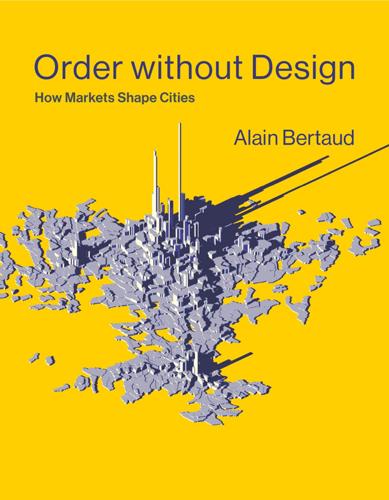
Order Without Design: How Markets Shape Cities
by
Alain Bertaud
Published 9 Nov 2018
Sources: Data for Paris: “Etude sur les deplacements,” Regie Autonome des Transports Parisiens, 2014; Beijing: “Beijing, the 4th Comprehensive Transport Survey Summary Report,” Beijing Transportation Research Center (BTRC), Beijing Municipal Commission of Transport, Beijing, China, 2012. Figure 5.7 Door-to-door commuting time from suburb to downtown New York (case study, no statistical significance). Figure 5.8 Extreme commuting in Gauteng (South Africa) case study. Source: “National Development Plan Vision 2030,” President’s National Planning Commission, South Africa, 2011. Figure 5.9 Average commuting travel time by transport mode, Singapore, Hong Kong, Dallas–Fort Worth, Paris, and New York. Sources: Data for United States: “Commuting in America 2013,” US DOT Census Transportation Planning Products Program, Washington, DC, 2013; Paris: “Les deplacements des Franciliens en 2001–2002,” Direction régionale de l’équipement d’Île-de-France, Paris, 2004; Hong Kong: “Travel Characteristics Survey-Final Report 2011,” Transport Department, Government of Hong Kong Special Administrative Region, Hong Kong, 2011; Singapore: “Singapore Land Transport Statistics in Brief 2010,” Land Transport Authority, Singapore Government, Singapore, 2010.
…
Because of the need to connect to the rail network to avoid the higher cost of the collective taxi, the distance she travels (47 kilometers) is much longer than the shorter road distance of 29 kilometers between her home and her workplace. If she had access to a motorcycle or even to a moped, she could commute in about 1 hour, instead of 2.5 hours. Access to a moped would allow her to gain 3 hours a day of disposable time! Figure 5.8 Extreme commuting in Gauteng (South Africa) case study. Source: “National Development Plan Vision 2030,” President’s National Planning Commission, South Africa, 2011. For a given home and job location, commuting time may show large variations depending on the main mode of transport, the number of transfers, and access time.
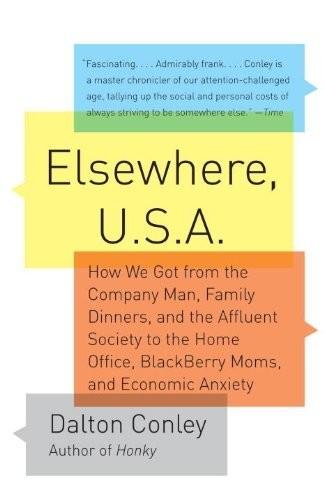
Elsewhere, U.S.A: How We Got From the Company Man, Family Dinners, and the Affluent Society to the Home Office, BlackBerry Moms,and Economic Anxiety
by
Dalton Conley
Published 27 Dec 2008
“Roughly one out of every six American workers commutes more than forty-five minutes, each way. People travel between counties the way they used to travel between neighborhoods,” Nick Paumgarten noted in April 2007 in The New Yorker. “The number of commuters who travel ninety minutes or more each way—known to the Census Bureau as ‘extreme commuters’—has reached 3.5 million, almost double the number in 1990. They’re the fastest-growing category, the vanguard in a land of stagnant wages, low interest rates, and ever-radiating sprawl. They’re the talk-radio listeners, billboard glimpsers, gas guzzlers, and swing voters, and they don’t— can’t—watch the evening news.”13 Paumgarten tells us of one man who won the Midas muffler-sponsored “longest commute” award for his round-trip daily total of 372 miles (seven hours) to Cisco Systems in San Jose, California.

Radical Cities: Across Latin America in Search of a New Architecture
by
Justin McGuirk
Published 15 Feb 2014
Bearing in mind that the Torre Confinanzas complex was originally designed to require twenty-three elevators, the fact that there are none and that the residents live as high as the twenty-eighth floor makes their adaptability, not to say stamina, all the more impressive. It’s true that residents of the barrios that cover the hills around Caracas are used to hour-long climbs up winding concrete staircases to get home. But this is a new extreme. Commuting up twenty-eight flights of stairs constitutes a kind of urban alpinism. It’s not even just a question of effort – the sheer tedium of that climb, day after day, in a poorly lit stairwell, must be hard to bear. As we go up and down the main internal staircase, it’s common to pass people stopping to catch their breath.

Ghost Road: Beyond the Driverless Car
by
Anthony M. Townsend
Published 15 Jun 2020
Finally, at the end of the land, under a sky full of stars, I pass over one last bridge and onto the barrier island. When I arrive there, I open the window and let the sound of the sea surround me. The city is my life’s work, but I feel the pull of this faraway place more each day. Nowadays, when I make this trip, my mind wanders through the possibilities of extreme commutes powered by automation. Could I live in the country and work in the city? I could be up before dawn and into the car, drifting off as I pass by the docks—as the fishermen set off on their own sleepy, self-driving commute to points offshore. The daily grind would take its toll. But it would be a small price to pay for a life in this jewel of a coastal town.
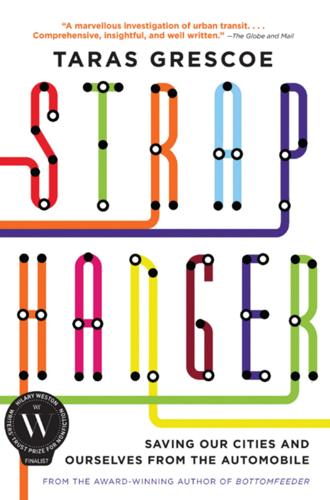
Straphanger
by
Taras Grescoe
Published 8 Sep 2011
In North America, decades of government policy have made the private automobile the de facto mode of public transportation. Nine out of ten American commuters get to work by car, and more than three-quarters of these car commuters drive to work alone. Thanks to congestion, the average commute in the United States is now 51 minutes a day, and 3.5 million Americans qualify as extreme commuters, spending three hours or more getting to and from work. Economists have actually managed to quantify the absurdity of this situation. According to the Texas Transportation Institute, congestion costs the American economy $115 billion every year in wasted time and fuel—or $808 per person, a figure that, in spite of recession, has increased by 50 percent in the last decade.
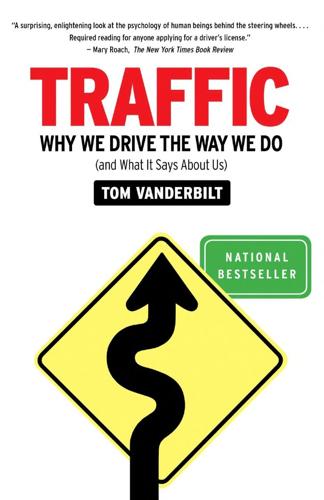
Traffic: Why We Drive the Way We Do (And What It Says About Us)
by
Tom Vanderbilt
Published 28 Jul 2008
Even as the size of the average North American family has fallen over the past several decades, the number of homes with multicar garages has almost doubled—one in five new homes has a three-car garage. To pay for all that extra space, commute times have also been expanding. One of the fastest-growing categories in the last “commuting census” in the United States was that of “extreme commuters,” people who spend upward of two hours a day in traffic (moving or otherwise). Many of these are people pushed farther out by higher home prices, past the billboards that beckon “If you lived here, you’d be home by now,” in a phenomenon real estate agents call “drive till you qualify”—in other words, trading miles for mortgage.